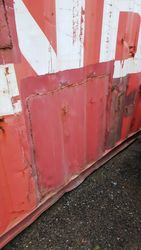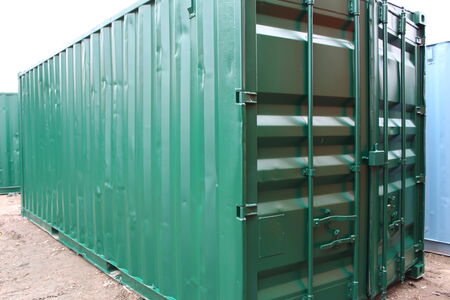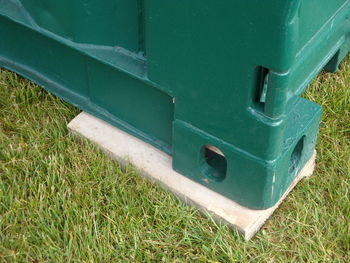Your guide to shipping container maintenance
Thursday 13 August 2020 Filed in: General

Shipping containers are designed to withstand extreme environments at sea, so they are manufactured from weatherproof Corten steel, marine grade ply flooring and paint that guards against corrosion. However, eventually all containers will succumb to some wear and tear, therefore it's recommended that you carry out regular inspections to the essential parts of the container. This is even more important for used shipping containers that will be further along in their lifespan and will already have areas of rusting on them. If you have bought from a reputable trader your container should be watertight, regardless of its age, and come with a warranty to this effect. Containers Direct give a year's warranty with all containers and will have carried out any repairs, including rusting and repainting before the container is sold. Once the warranty has expired it's down to you to maintain the container with regular checks and take any necessary remedial action.
Five steps you can take to keep your container in top condition for as long as possible.
- Check for areas that have rusted through

Evidence of rusting on shipping containers is completely normal, and Corten steel is designed to form a protective layer, but any areas that have rusted through will need attention. You can spot these areas of concern by going inside the container and checking for daylight coming through where it shouldn't! At Containers Direct we treat rusting that has gone through using a patch. First the damaged section is removed, then a piece of matching corrugated steel is seam welded on to replace the break. Repainting this area with marine grade, rubberised paint will help seal it from further corrosion. - Maintain the container doors
To ensure continued smooth and easy use then it's a good idea to clean and lubricate the doors from time to time. The hinges and locking bars can get a build-up of rust, grime and dirt over the years, which can affect their performance. Keeping them free of debris and well lubricated will prevent more serious problems later down the line and prevent battling with stiff and hard to open doors. If you have rubber door seals inspect them for signs of perishing and replace if necessary. - Check modifications

Shipping container modifications are designed to give you the container to suit your requirements. Conversion work can include cutting down to a particular size, additional doors, special door types, and windows. This type of work requires cutting and welding, so remember to check these areas around the joins where work has been carried out. They may collect dirt and water, so they should be kept clean and rust free. Any problem areas can be treated with an anti-corrosive paint. - Inspect the roof
Don't forget the roof! This needs the same inspection and maintenance as the rest of the container, so get up a ladder and inspect it. Look out for any dents that may be collecting rainwater. If the paint is chipped around these it could lead to corrosion so it will need touching up. - Keep the container on a hard-standing level surface

This is the most important step you can take to ensure longer, problem-free life for your container. Soft or uneven ground can lead to your container "racking out". This is when the container twists slightly and damages the movement of the doors. Alternatively you can place concrete pads or railways sleepers at each corner. To find out more about siting your shipping container read our article The Bottom Line - What To Put Under Your Shipping Container
We have placed cookies on your browsing device to enable this website to function correctly.
Further usage of this website indicates you are happy for us to do this..
Find out about the cookies we have set and how we use them.
Further usage of this website indicates you are happy for us to do this..
Find out about the cookies we have set and how we use them.
